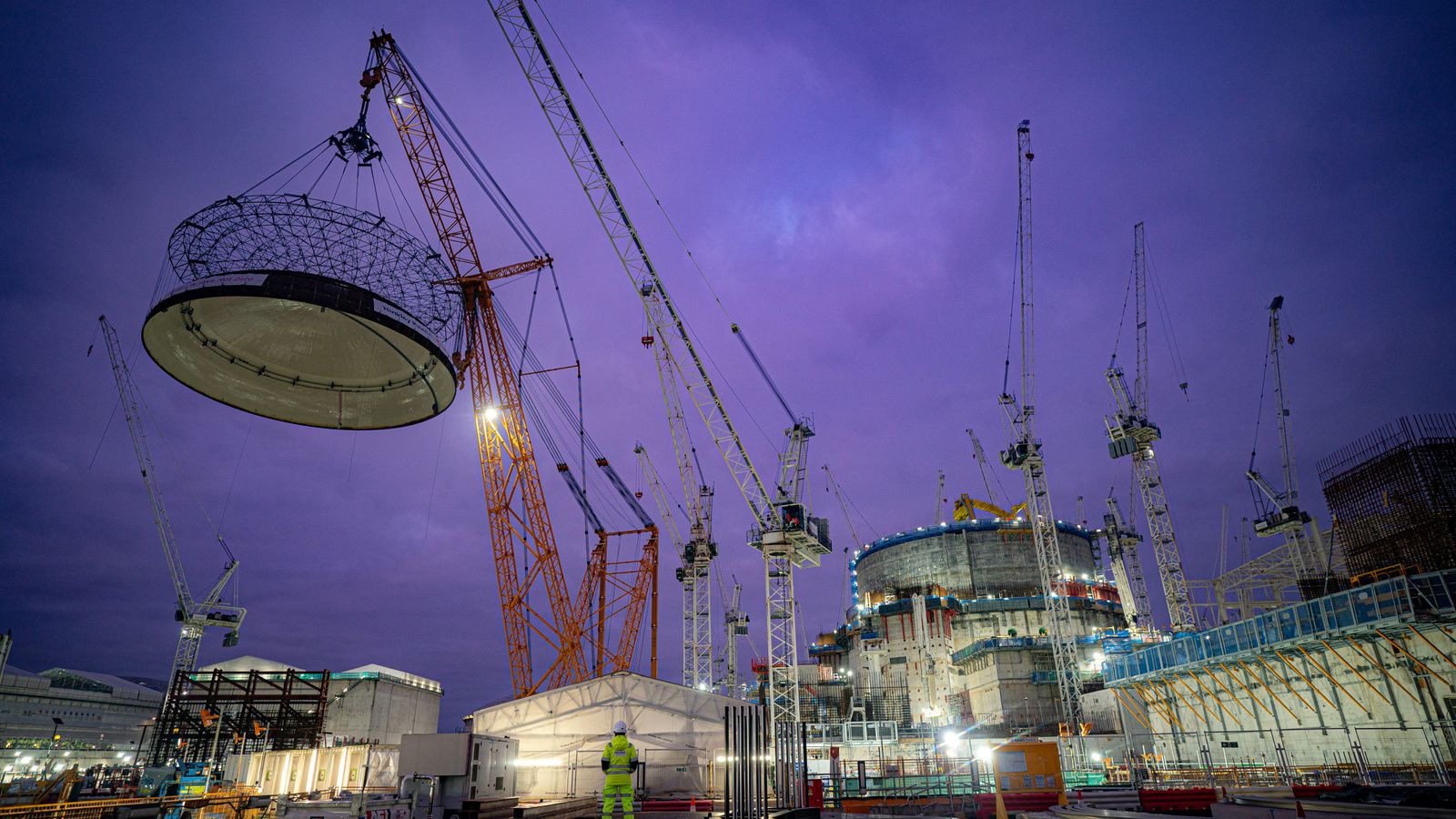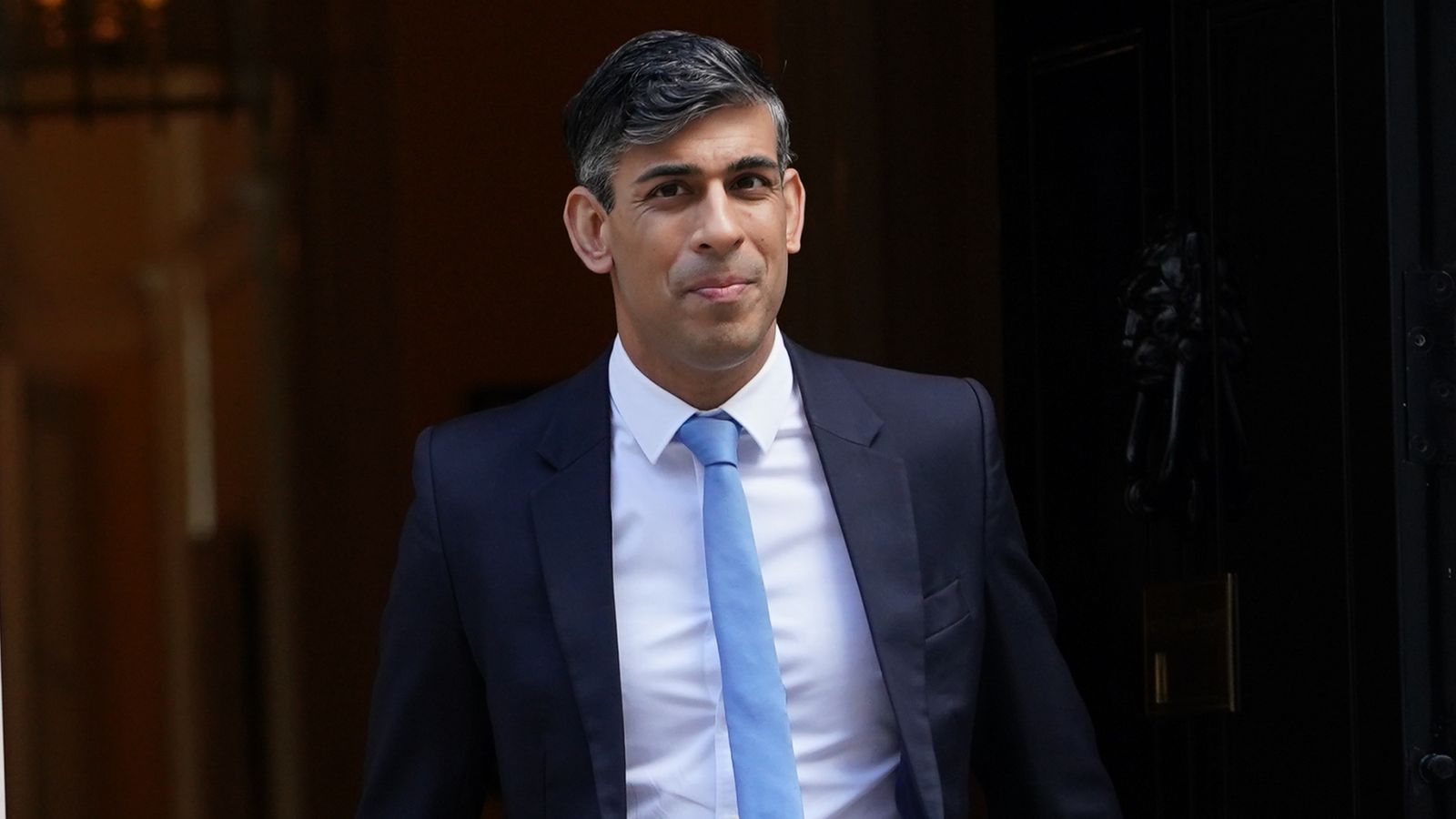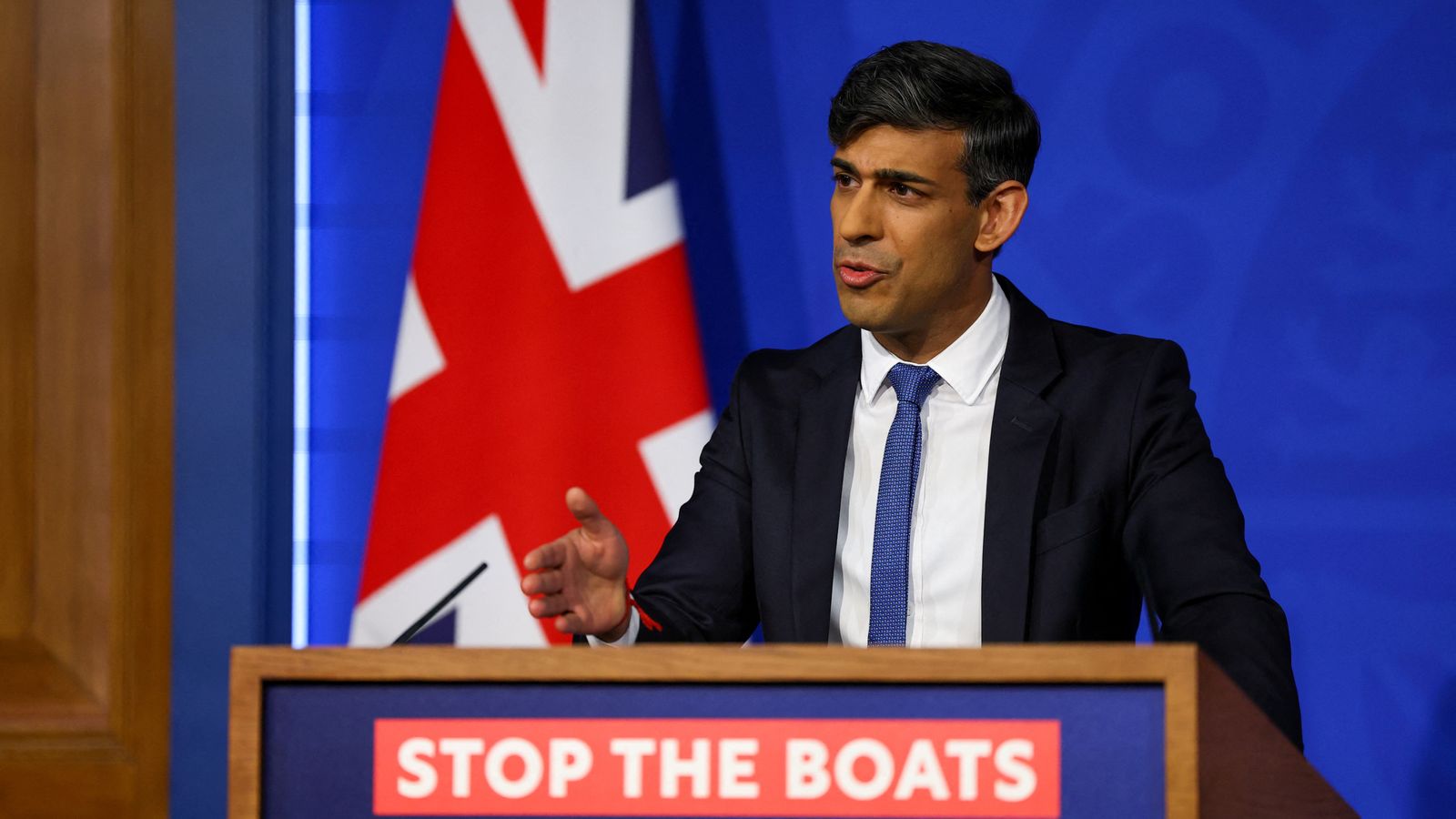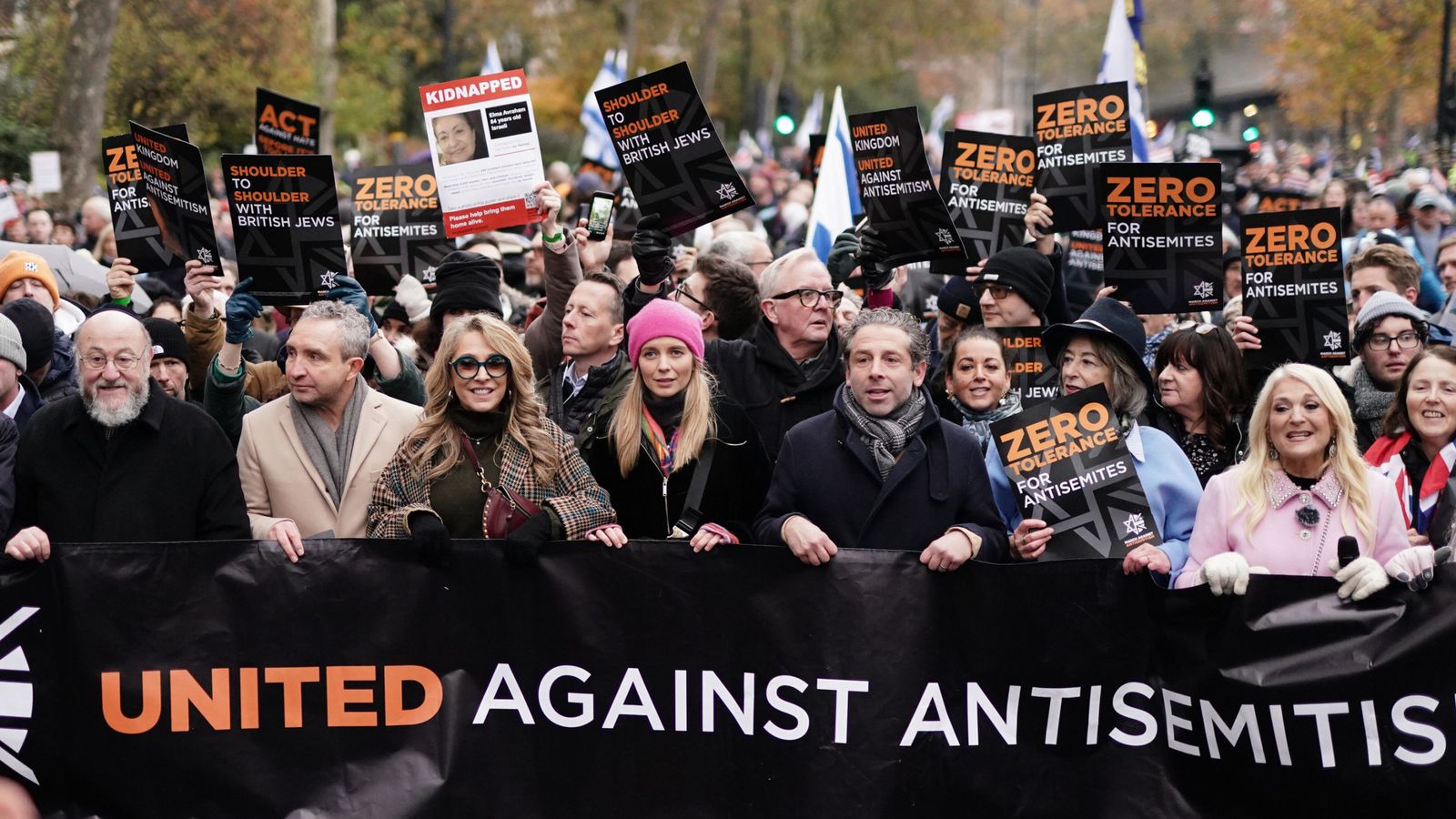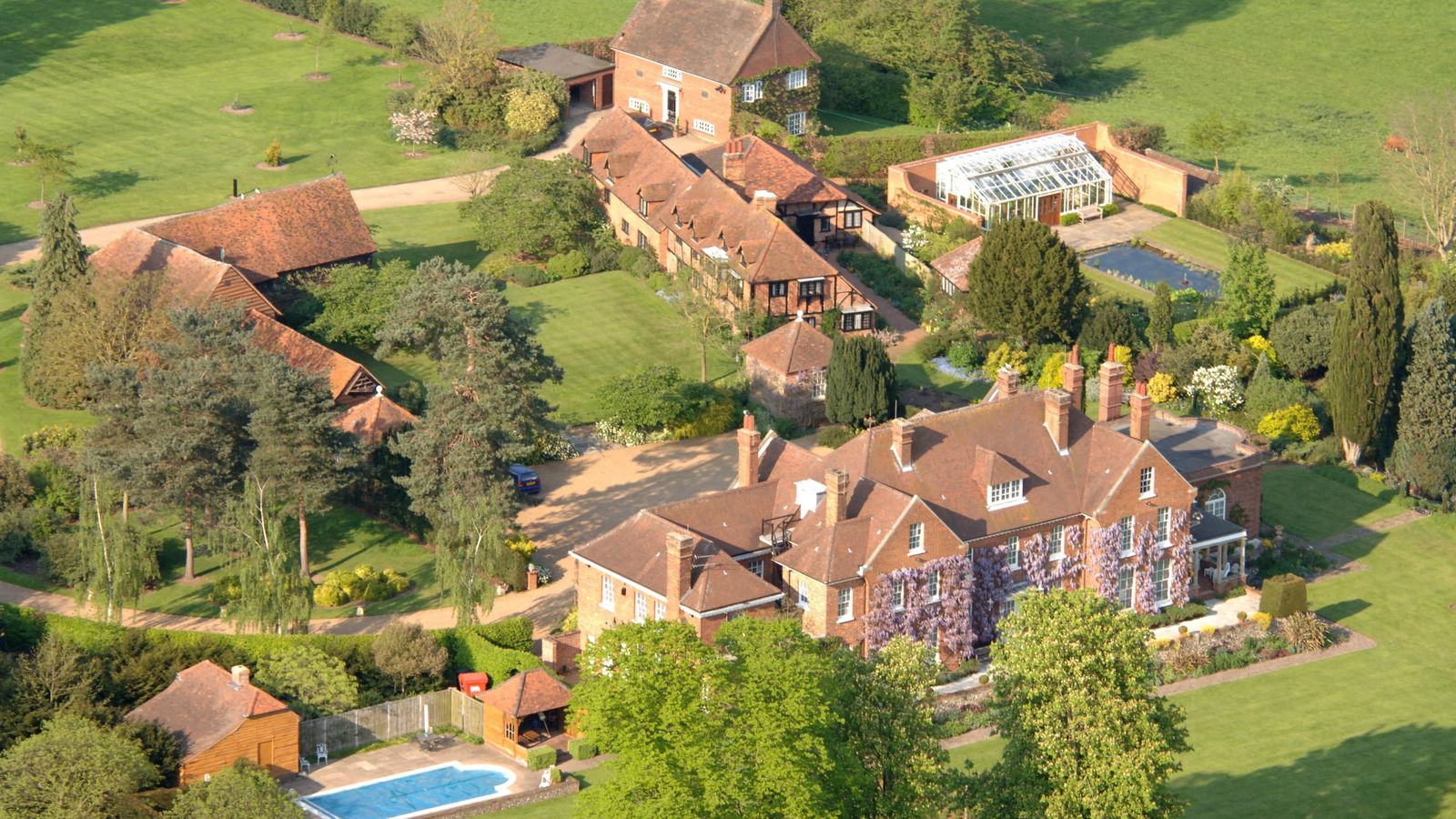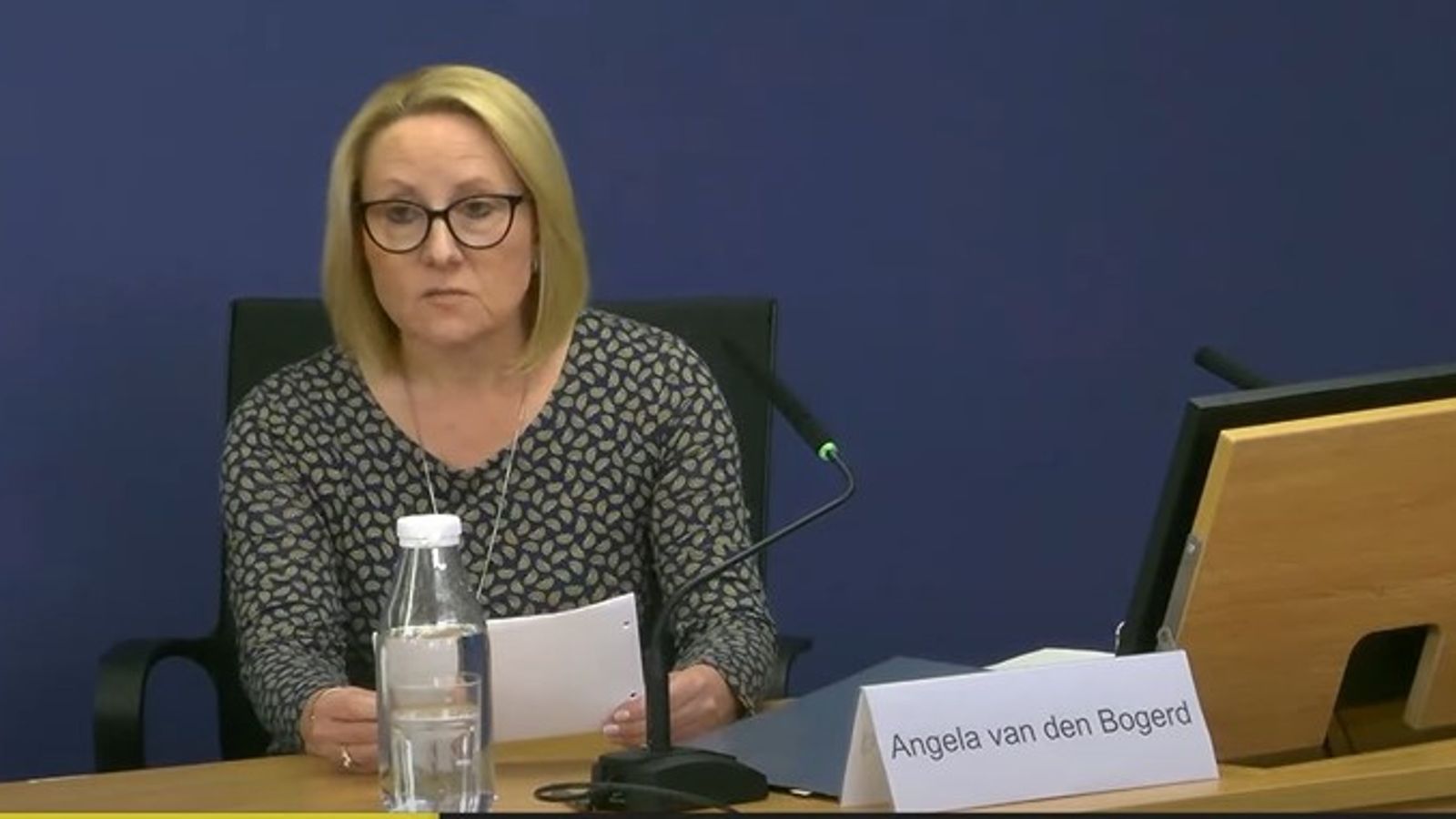
The government has unveiled plans it claims could bring about the country’s “biggest expansion of nuclear power for 70 years”.
The new Civil Nuclear Roadmap describes how the UK could meet its existing target to generate up to 24GW of nuclear power by 2050.
If realised, this be would be four times the current capacity and provide a quarter of the UK’s electricity needs.
But as previous nuclear plants have been plagued by delays and spiralling costs, today’s plans have been met with scepticism by some.
These groups argue much of the money would be better spent on cheaper, renewable power, or on ways to reduce demand.
Announcing the plans today, the Prime Minister Rishi Sunak called nuclear power the “perfect antidote to the energy challenges facing Britain”.
Nuclear is “green” and “will ensure our future energy security and create the jobs and skills we need to level up the country and grow our economy”, he said.
Nuclear power provides very low-carbon electricity, the roadmap said there is “is no credible pathway to net zero” without it.
Its share of generation is currently falling in the UK, while demand for electricity is rising as the country electrifies home heating, transport and industry.
The roadmap also includes a government ambition to secure 3-7GW worth of investment decisions every five years from 2030 to 2044 on new nuclear projects.
UK nuclear power’s troubled history
Dr Simon Cran-McGreehin from climate thinktank ECIU welcomed the detail on the long-touted plans, but warned: “Nuclear history shows us that it is expensive, and it is usually more difficult and complicated to build and takes longer than expected.“
The UK currently has one nuclear power plant under construction, the 3.2 GW Hinkley Point C, now due to cost ££32.7 billion rather than the initially approved £18bn, and come on line years several years late.
Its developer EDF attributes the problems partly to inflation and the COVID-19 pandemic.
One further plant is in the pipeline, Sizewell C in Suffolk, which is expected to start running in 2034, ten years later than planned.
The roadmap confirmed the government is still considering a further large power plant the size of Sizewell or Hinkley, as well as new “small modular reactors” (SMRs) from the mid-2030s.
SMRs are smaller than conventional plants, and can be made in factories rather than on site, making them potentially faster and cheaper to deliver.
However, SMRs are not yet commercially available.
Industry welcomed the “greater clarity and predictability” from the roadmap.
Tom Greatrex, chief executive of the Nuclear Industry Association, said: “We will need both large and small nuclear at scale and at pace for our energy security and net zero future.”
Alternatives are ‘cheaper and easier’
Dr Simon Cran-McGreehin added: “Anything that helps get us off gas and greenhouse gas emissions is a good thing.
But there are “definitely alternatives that are cheaper and easier to deploy”, he said.
“We know that renewables and energy efficiency are cheaper and more effective and can be done, instantly,” he added.
The energy department said the new plans to streamline development of new power stations and improve regulation could speed up the delivery of nuclear power.
But Tom Burke, chair of climate thinktank E3G called the plans “delusional”. He said: “This is nuts”.
“It’s not going to help with meeting the current government’s carbon neutral [power system] by 2035 target, because you’ll hardly have started it in 2035.”
He said renewables and battery storage are proven and cheaper and faster to deploy, as are ways to cut power demand, such as by insulating homes.

